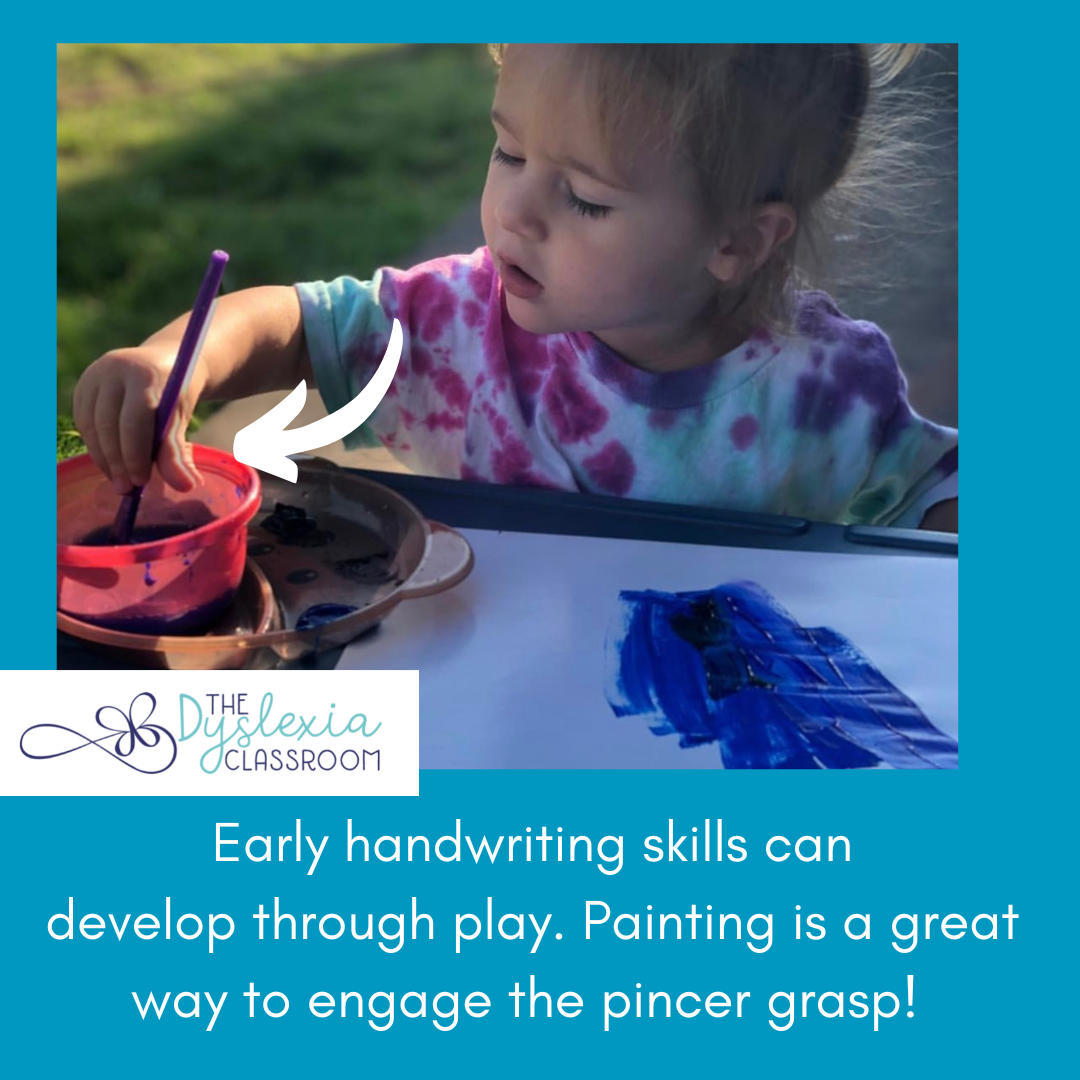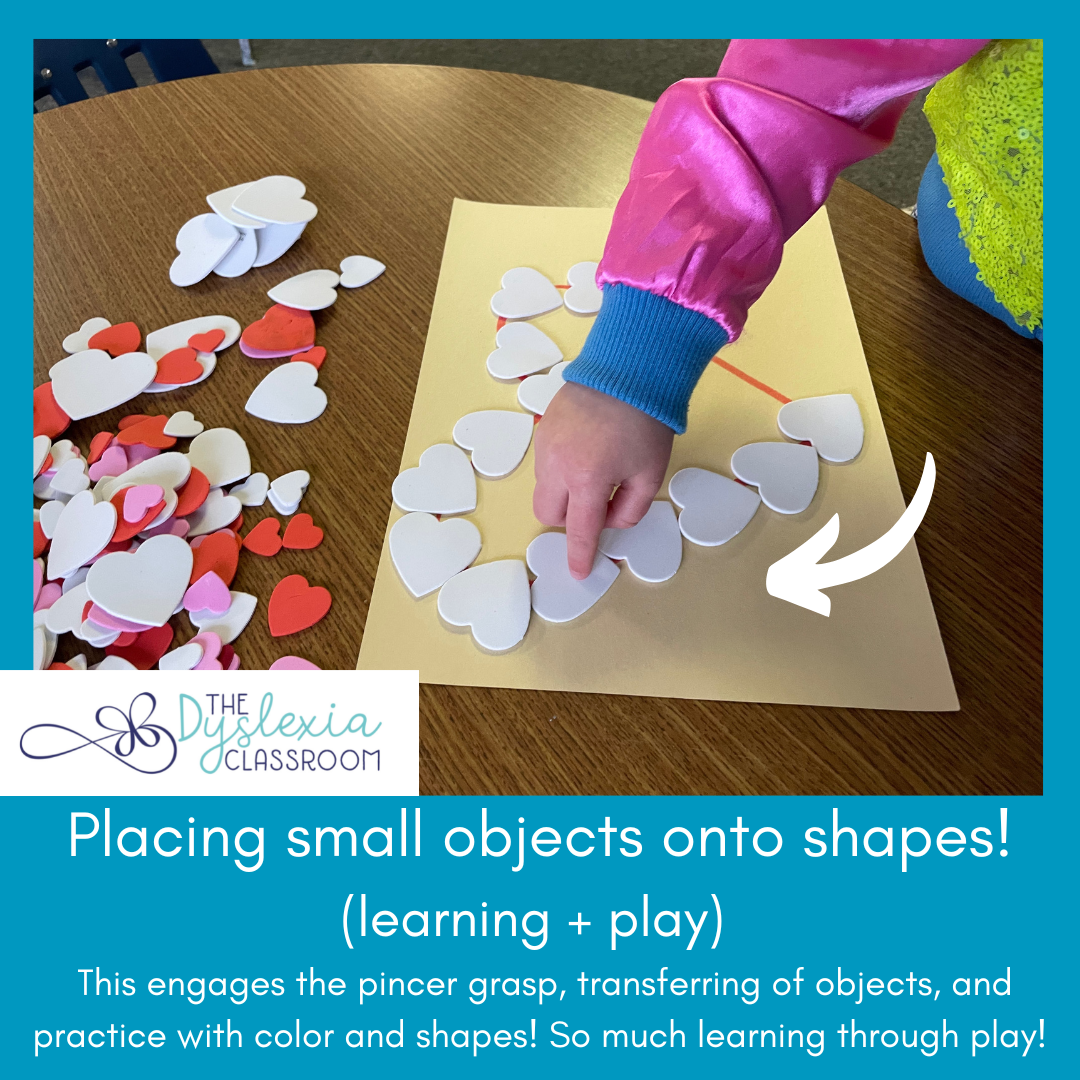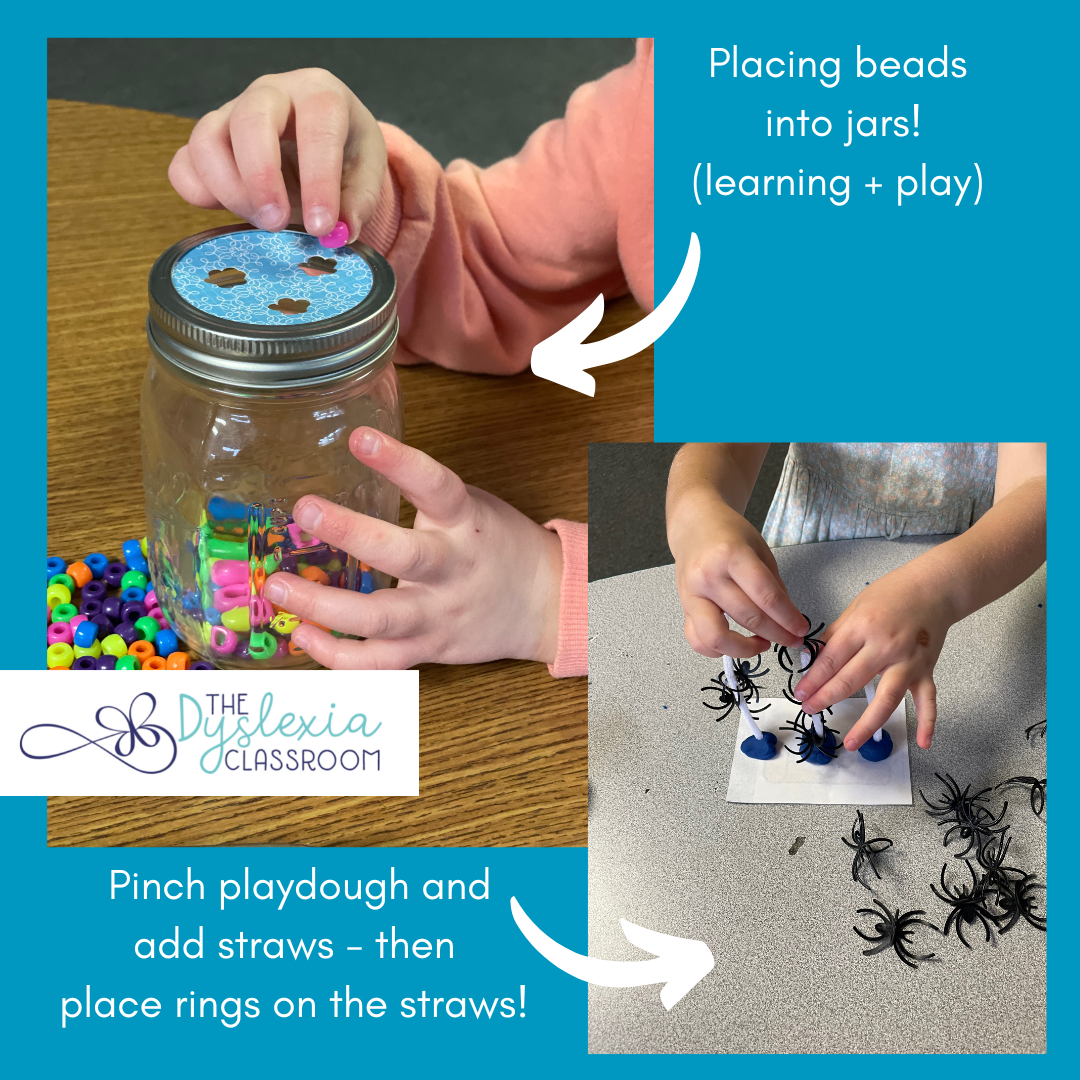Simple Ways to Build Fine Motor Skills with Children

While we think of handwriting skills in school-age children, early development plays a role in children gaining pencil control. There is so much we can do to build those early writing skills before children pick up a pencil!
Developing large and fine motor skills is the basis for handwriting skills and the proper instruction. Often when working with older or early elementary students who struggle with handwriting, I will embed some work with fine motor skills.

How Children Use A Pencil
To hold a pencil correctly, a child must have control of hand muscles, especially the pincer grasp. If you look closely at the grip this little two-year-old uses to hold her paintbrush, you can see her use of the pointer finger and her thumb (pincer grasp) to hold the brush. Her pincer grasp is developed enough for her to move toward the five-finger pencil grasp and eventually to the three-finger pencil grasp used for writing. It is important to note that there are stages of development for pencil grasp/grip with age norms, but some children move quicker or slower through these.
You can work on building the muscles needed for the pincer grasp through games and everyday activities such as picking up small pieces of food, stringing beads, buttoning shirts, and more!

Practicing Skills Through Play
Practicing fine motor skills is a natural part of play and helps develop muscle control for handwriting. Play is a wonderful way to practice many hidden skills needed on the educational journey.
The beautiful thing about play is that it often encompasses many skills that later transfer to educational expectations. The practice of fine motor skills is a natural part of play that links to handwriting later on.
A baby will typically develop this skill of using their index finger and thumb to pick up items between 9-10 months of age; however, the true pincer grasp is when a child uses the tips of their fingers (index and thumb) to pick up manipulate small objects.
This little learner (2.5 years) loves playing with the Lite-Brite© set. It's a perfect way for her to work on picking up small objects with her thumb and index finger and transferring that object to a location (putting it into a small hole) which builds muscle control, hand-eye coordination, and precise placement of a small object.

Everyday Ways To Practice Fine Motor Skills
Some tasks that can assist in the pincer grasp development:
- string beads or noodles
- picking up small objects (beads, beans, etc.)
- transferring small objects from one place to another
- playdough
- sewing
- eating finger foods
- using tweezers or tongs to pick up small objects like pom-poms, beads, toys, etc.
- clothespins
- pegboard activities
- boardgames with small pieces
- putting coins or paper in a slot
- rings on pipecleaners
- peeling stickers off a sheet
- transferring stickers
- painting
- making paint dots with q-tips
- So many more!

Once students have fine motor control, we can begin explicit handwriting instruction. We know that the knowledge of letter names and fluency of letter naming in kindergarten are among the best predictors of later reading success (Catts et al., 2015). Handwriting, in turn, helps students store letters as linguistic symbols. 📝 When students have the precise motor sequence for forming each letter, it is automated and recalled without conscious effort. This automaticity leaves mental energy for the written composition of writing. Students who struggle with automatic letter writing will also struggle with putting thoughts onto paper because their energy is expended on forming letters instead of content. Read more about explicit handwriting here.
While the pincer grasp is only one piece of development that leads to how to write and hold a pencil, it is an essential skill that children can develop through play. What is better than that?!
I try to be mindful of everyday activities in which the use of the pincer grasp is needed and have children help with those tasks if appropriate.
What are some of your favorite ways to build fine motor skills?

This information is the intellectual property of @2016 The Dyslexia Classroom. Do not use or repurpose without expressed permission from The Dyslexia Classroom. Please give The Dyslexia Classroom an attribution if you use, reference, or quote/paraphrase copyrighted materials. This includes but is not limited to blogs, social media, and resources.



